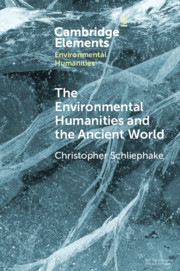Element contents
The Environmental Humanities and the Ancient World
Published online by Cambridge University Press: 04 July 2020
Summary
- Type
- Element
- Information
- Online ISBN: 9781108782005Publisher: Cambridge University PressPrint publication: 23 July 2020
Bibliography
- 17
- Cited by



